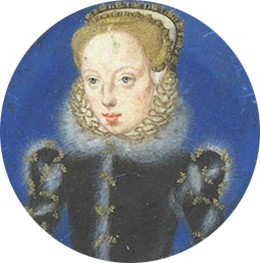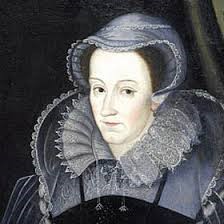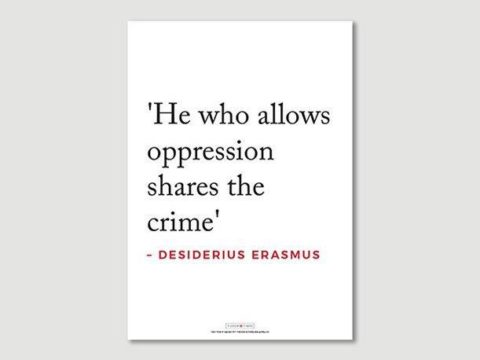The Tudor Succession Problem
Chapter 7 : Elizabeth I
In 1558, Elizabeth inherited both her sister’s crown, and the perennial problem of no immediately obvious heir. There were two main possibilities. Lady Katherine Grey, who was entitled to inherit if Henry VIII’s nomination in his will were legitimate, and Mary, Queen of Scots, who, if Henry’s will were not adequate, was the heir under common law, unless, as some people thought, she could not inherit because she was born out of the country.

The Countess of Lennox and her sons were possibilities, although Elizabeth’s relationship with Lady Lennox was very cool – she resented the way Margaret had been given precedence of her by Queen Mary. The Courtenays were gone, and the Staffords were singing small.
Lady Margaret Clifford hinted occasionally that she ought to be considered. She had been saved from having to marry a man four times her age, and had, instead, married Henry Stanley, Lord Strange, heir to the Earl of Derby, with Queen Mary’s permission. They had two sons, Ferdinando and William Stanley.
Elizabeth was absolutely determined that she would not name any heir. Whilst instability and argument over the succession was bad, she was convinced that to name an heir would be worse. During her sister’s reign there had been frequent attempts to draw her into plots, and she neither wished to have someone hanging over her, waiting for her to die, nor to expose anyone to the difficulties of being courted by rebels. Her own inclinations were towards the claims of Mary, Queen of Scots, and she stated that she knew of no-one with a better claim: nevertheless, she would not confirm Mary as her heir.

Elizabeth disliked the Grey sisters, Katherine and Mary, and after Katherine married without her consent in 1561, she was confined to prison for the rest of her life. During that period there were many, generally the more radical Protestants, who promoted Katherine as the heir, and several men ended in prison for their impudence, after promoting Katherine’s claims in Parliament. Elizabeth was reluctant to allow Parliament to discuss the succession. She believed that to allow Parliament to determine it was to accept the Parliament was above the Crown, rather than an instrument of the sovereign.
Besides, Elizabeth, for the first twenty years of her reign, never definitely decided not to marry herself. It was obvious that she did not want to marry, but it could not be said she made a firm commitment to staying single, until she reached an age when no heir could be born to her.
In 1566 the two lines of descent from Margaret, Queen of Scots coalesced when Mary, Queen of Scots married her half-cousin, Henry Stuart, Lord Darnley. This earned his mother, Lady Lennox, a spell in the Tower. The following year, the couple had a son, James VI, who became King of Scots following the deposition of his mother in 1568.
Elizabeth’s headaches got worse, as the Queen of Scots took refuge in England following her deposition. Elizabeth did not have any choice but to hold the Queen captive. Many Catholics believed Mary was, in fact, the legitimate Queen of England, never having accepted the position of Elizabeth, and true to Elizabeth’s fears, Mary attracted, and probably instigated, numerous plots aimed at depriving Elizabeth of the throne, and installing Mary.
Possible successors multiplied. As well as Mary and James of Scotland, there were the sons of Lady Katherine Grey - Edward and Thomas Seymour. The marriage of their mother had been declared invalid, and the two were held to be illegitimate, but the reality was that many believed the marriage good. Margaret Clifford’s oldest son, Ferdinando Stanley had also married, and, by the time of his death (during his mother’s lifetime) he had a daughter, Anne Stanley, later Countess of Castlehaven, born in 1580, as well as a younger brother.
In 1587, Elizabeth finally capitulated to pressure, and allowed the execution of Mary, Queen of Scots. As Mary’s son, James, had been brought up as a Protestant, and the enmity between the two countries had waned since the reign of Henry VIII, his position looked the strongest, although, according to Henry VIII’s will, there were others in front of him – the descendants of Lady Katherine Grey and Lady Margaret Clifford.
Another contender who became a hot favourite towards the close of Elizabeth’s reign was Lady Arbella Stuart. Born in 1575, she was the daughter of Lord Charles Stuart, younger son of the Countess of Lennox. The marriage of her parents, again without the Queen’s consent, had given Lady Lennox yet another taste of the Tower. Lady Arbella was being brought up by her maternal grandmother, Elizabeth, Countess of Shrewsbury (Bess of Hardwick). For those who preferred the line of Henry VIII’s older sister, to that of his younger sister, she seemed the ideal candidate. Her gender, was, of course a draw-back, but she was brought up as a Protestant and was considered to be fully English, unlike her cousin, James of Scotland.
Towards the end of Elizabeth’s reign there were rumours (that Arbella vigorously denied) that she planned to marry Lady Katherine Grey’s grandson, William Seymour, and unite their claims.
During the 1590s, there were rumours that some of Elizabeth’s Councillors, in particular, Robert Cecil, wanted to promote the candidacy of a woman far more distantly related. The Infanta Isabella Clara Eugenia, Archduchess of Austria, was the most senior member of the Lancastrian branch of the English royal family. John of Gaunt’s daughter, by his first marriage to Blanche of Lancaster was named Philippa. She married Joao I of Portugal, and was Isabella’s 4 x great-grandmother, via her father, Philip II of Spain.
Archduchess Isabella was joint-sovereign Duchess of the Spanish Netherlands from 1598, with her husband, Archduke Albert. Their reign had finally brought stability to the region, and Isabella was an extremely able woman. Although it is unlikely that anyone took this idea seriously, hints that an accommodation with Spain was planned by Cecil were a contributing factors in the factional disagreements that led to the Essex Rebellion.
Despite the endless circulation of rumours, Elizabeth continued to refuse all pressure to name an heir. She would go no further than to say that on her death, the person with the most right should inherit.
At last, when the end came, her councillors pressed her to name her successor. It was claimed, that, on her deathbed she nominated James VI of Scotland, with the words that only a king was fit to succeed a queen. This would accord with her original position that Mary, Queen of Scots had the best right to succeed her, but it also chimed well with the position of her chief councillor, Robert Cecil, who had been ingratiating himself with James for some time.
Thus, after all of the troubles of the Tudor century, the succession passed smoothly to the man who would have been the heir without any of the Acts of Succession of Henry’s reign, and all of Henry’s attempts to curtail the rights of his sister Margaret and her Scottish husband had failed. James IV, cut to pieces at Flodden in 1513, had the last laugh.
This article is available for Kindle, for purchase from Amazon US and Amazon UK.
